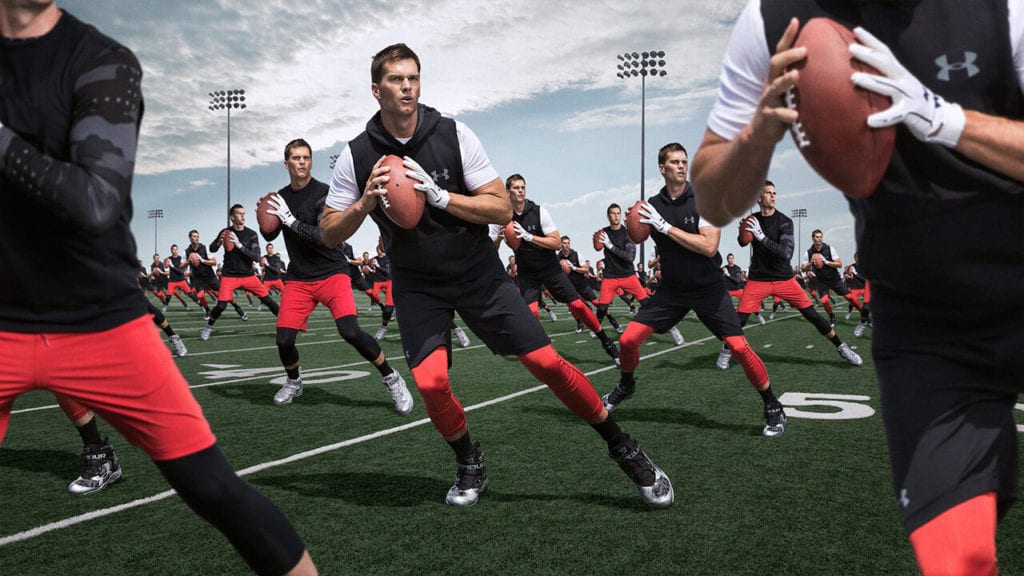During the summer of 2016, Justin Goldman spotted Tom Brady walking down Newtown Lane in East Hampton, New York along with Celtics players Kelly Olynyk and Marcus Smart, and a handful of the basketball team’s officials. Goldman snapped a candid photo of the New England Patriots star, posted it to his Snapchat, and went about his day in the swanky seaside town that draws well-heeled summer vacationers each year. Unbeknownst to Goldman, in posting the photo, he would have a hand in giving rise to a significant question in connection with copyright law and the internet: does the unauthorized embedding of social media posts amount to copyright infringement?
Goldman’s quickly-captured photo, paired with the caption, “Celtics and Tom Brady roll through to get Durant,” turned out to be significant because it fueled rumors that “Brady was part of the Boston Celtics contingent attempting to recruit Durant,” a free agent at the time, according to Sports Illustrated. The looming speculation over Durant – who would end up on the Golden State Warriors’ roster before jumping ship to the Brooklyn Nets this year – was precisely why screengrabs of the photo ended up making their way en masse from Goldman’s Snapchat to others’ tweets.
Ultimately, many of those tweets would find themselves embedded into articles on sites on the various news sites that were covering the budding rumors about Durant’s future prospects. The problem? Goldman never authorized any of the third-party use of the image that he took that day in the Hamptons. With that in mind, he filed suit against nine media entities – including Vox, Time, Yahoo, and Breitbart – alleging that they had run afoul of his exclusive right as the copyright holder to display the image by embedding tweets that contained his photo into articles on their websites.
Siding with Goldman in early 2018, Judge Katherine Forrest of the U.S. District Court for the Southern District of New York’s decision came in stark contrast to the general agreement among U.S. courts that when a party embeds a photo into an article – and thus, does not actually create a copy of the image or store it on its server – there is no new “display” of the photo for copyright purposes, and as a result, no copyright infringement.
Despite the U.S. Court of Appeals Ninth Circuit’s widely-cited 2007 decision in Perfect 10, Inc. v. Amazon.com, Inc., which determined that unlike when a website owner/operator stores an image and then provides that image directly to users, which clearly violates a copyright holder’s exclusive rights, embedding is not a violation of copyright law, Judge Forrest determined that the media company defendants had, in fact, infringed Goldman’s copyright-protected image by using Twitter code to embed it onto their sites.
Following the lower court’s decision, Heavy Inc., one of the defendants, asked the Second Circuit Court of Appeals to review Judge Forrest’s finding, only to have the court decline, thereby leaving Forrest’s decision to stand as is.
The issue appeared as though it might be up for debate again when paparazzi photographer Robert Barbera filed suit against CBS alleging that the news site infringed his exclusive right to display and/or authorize others to display a photo he took of Justin Bieber by embedding an Instagram post from Bieber – who posted the photo to his Instagram account without Barbera’s authorization – onto one of its subsidiary sites.
Barbera’s case – in which CBS denied infringement liability, arguing that “any use of the image in suit by [CBS] was through in-line linking or embedding” – stood to potentially clarify the split between Forrest’s decision and the Ninth Circuit’s rule. However, the chance for clarity was cut short when the parties settled the case out of court long before trial.
However, a new case filed by Goldman could provide some much needed guidance. In a complaint filed in a New York federal court in October, counsel for Goldman is looking to hold a new media company – Cox Media Group – to the standard set forth by Judge Forrest, arguing that Cox infringed his right in the image of Tom Brady when it “prominently displayed” the photo of its websites countrylegends971.com, eagledayton.com, and k99online.
In the complaint, Goldman’s counsel points to the Goldman v. Breitbart case, stating that “Judge Forrest granted summary judgment to [Goldman] on a specific legal issue, namely whether the process of ‘embedding’ provides a defense to the defendants’’ alleged copyright infringements.” The court’s decision, the complaint states, “held that embedding provided no such defense.”
With that in mind, Goldman is seeking permanent injunctive relief and an array of monetary damages from Cox, including any profits it earned in connection with its display of the photo – and very well might be giving rise to the opportunity to set the record straight about how embedded imagery should be treated when it comes to copyright law.











